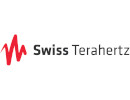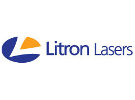- Homepage
-
Products
- Scientific Lasers
- Laser Measurement & Modulation
- Laser Safety
- Optics and Lab. Mechanicals
- Vibration Isolation Table
- Positioning - Motion Control
- Electronic Instruments
- Hyperspectral - Low Light Camera
- Spectroscopy
- Microscopy
- Granulometry - Zeta potential
- Birefringence Measurement
- Industrial Lasers & Machines
- Engineering (En/Fr)
- Engineering (En/De)
- Applications
-
PDF Catalog
- GMP Prize
- News & Events
- Contact us
- Careers
- About GMP
- Homepage
-
Products
- Scientific Lasers
- Laser Measurement & Modulation
- Laser Safety
- Optics and Lab. Mechanicals
- Vibration Isolation Table
- Positioning - Motion Control
- Electronic Instruments
- Hyperspectral - Low Light Camera
- Spectroscopy
- Microscopy
- Granulometry - Zeta potential
- Birefringence Measurement
- Industrial Lasers & Machines
- Engineering (En/Fr)
- Engineering (En/De)
- Applications
-
PDF Catalog
- GMP Prize
- News & Events
- Contact us
- Careers
- About GMP
- Homepage //
- Birefringence
- //
- Residual Stress Birefringence in Optical Materials
Warranty
In Switzerland from a Swiss Company
E-mail contact
Prices in Swiss Francs
Our prices are regularly adapted to the exchange rate

Since 1977, GMP has been active in the fields of lasers, spectroscopy, photonics and micropositioning. Thanks to an efficient sales and service organization, GMP has become not only a top distributor of high technology products, but is also able to propose turnkey solutions for equipment integration, developed by GMP's engineering department.
Our Brands




































Informations





